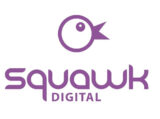Harnessing the Power of Social Media for Brand Building
Social media is an essential tool for businesses aiming to build brand awareness, foster loyalty, and connect directly with their audiences. From increasing visibility to creating authentic connections, social media provides unique opportunities for brands to grow and thrive. But to make the most of social media, it’s crucial to approach it strategically.

Why Social Media Matters for Brand Building
Social media has transformed how brands interact with customers, offering a dynamic platform to showcase their personality, values, and expertise. Key benefits include:
Increased Brand Awareness: Social platforms amplify reach, putting your brand in front of a global audience.
Audience Engagement: Direct communication fosters a sense of community, helping you understand and respond to audience needs.
Authenticity and Trust: Social media allows brands to showcase their human side, building credibility and trust with their audience.
Cost-Effective Marketing: Social media enables you to connect with potential customers without the high costs of traditional advertising.
How to Build Your Brand on Social Media
To effectively build a brand on social media, it’s essential to create a strategy that aligns with your business goals and resonates with your audience. Here’s a step-by-step guide:
- Define Your Brand Identity
Before diving into social media, establish a clear brand identity. This includes:
Your Brand Voice and Tone: Decide on a voice that reflects your brand’s personality.
Visual Identity: Consistent visual elements like colors, fonts, and logo usage make your brand recognizable across platforms.
Core Values and Messaging: Define your brand’s values and messages.
A clear and consistent brand identity makes it easier for your audience to recognize and remember you, building familiarity and trust.
- Choose the Right Platforms
Each social media platform has its unique user base and culture. Choose the platforms that best suit your brand and audience:
Instagram: Ideal for visual storytelling, showcasing products, and connecting with a younger demographic.
Facebook: A versatile platform that reaches a broad audience and is great for community building.
LinkedIn: Excellent for B2B brands, networking, and sharing industry insights.
Twitter: Effective for real-time updates, customer service, and building a conversation around trending topics.
By selecting the right platforms, you’ll be able to tailor your content to maximize engagement.
- Create Valuable and Engaging Content
Social media is all about providing value. People are more likely to engage with content that informs, entertains, or inspires them. Here’s how to make your content stand out:
Educational Content: Share tips, how-tos, or industry insights that position your brand as a trusted resource.
Storytelling: Use stories to showcase the people, values, and mission behind your brand.
User-Generated Content (UGC): Encourage your audience to share their experiences with your brand. UGC builds credibility and trust and makes your followers feel part of the community.
Behind-the-Scenes Content: Give a glimpse into your brand’s day-to-day operations, product creation, or team culture to create a more personal connection.
Experiment with different types of content—videos, images, infographics, and interactive posts—to see what resonates most with your audience.
- Be Consistent with Posting
Consistency is key to staying top of mind on social media. Develop a posting schedule and stick to it. Here’s a strategy for maintaining consistency:
Content Calendar: Plan your posts in advance to ensure a steady stream of content.
Quality over Quantity: Focus on delivering valuable content rather than just posting frequently. It’s better to post less often if it means maintaining high-quality standards.
Engage Consistently: Besides posting, engage with your audience consistently. Reply to comments, answer questions, and like or share user posts related to your brand.
A regular presence reinforces your brand’s reliability and keeps followers engaged.
- Engage with Your Audience
Social media is a two-way street. Instead of just posting, actively interact with your audience. This can be done by:
Responding to Comments and Messages: Acknowledge and reply to customer comments and questions. This shows that you value their feedback and appreciate their engagement.
Running Polls, Quizzes, and Q&As: Interactive content encourages followers to participate and gives you insights into their preferences.
Hosting Live Sessions: Live streams on platforms like Instagram, Facebook, or LinkedIn allow for real-time interaction and can be great for product launches, Q&A sessions, or tutorials.
Active engagement helps build community, making your followers feel valued and connected to your brand.
- Track and Analyze Your Performance
Finally, regularly analyze your social media efforts to understand what’s working and where there’s room for improvement. Key metrics to track include:
Engagement Rate: The number of likes, comments, and shares your content receives. High engagement indicates your content resonates with your audience.
Follower Growth: Track how your follower count grows over time to gauge the effectiveness of your brand-building efforts.
Website Traffic and Conversions: Use tools like Google Analytics to measure how social media drives traffic to your website and track conversions from social campaigns.
By analyzing data and adjusting your strategy, you can continue to refine your approach and achieve stronger results over time.
Conclusion
Social media is a powerful tool for brand building, offering the chance to connect with audiences, share your brand’s story, and establish a lasting presence. By defining your brand identity, choosing the right platforms, creating engaging content, and actively interacting with your audience, you can turn your social media presence into a valuable asset for your brand.
